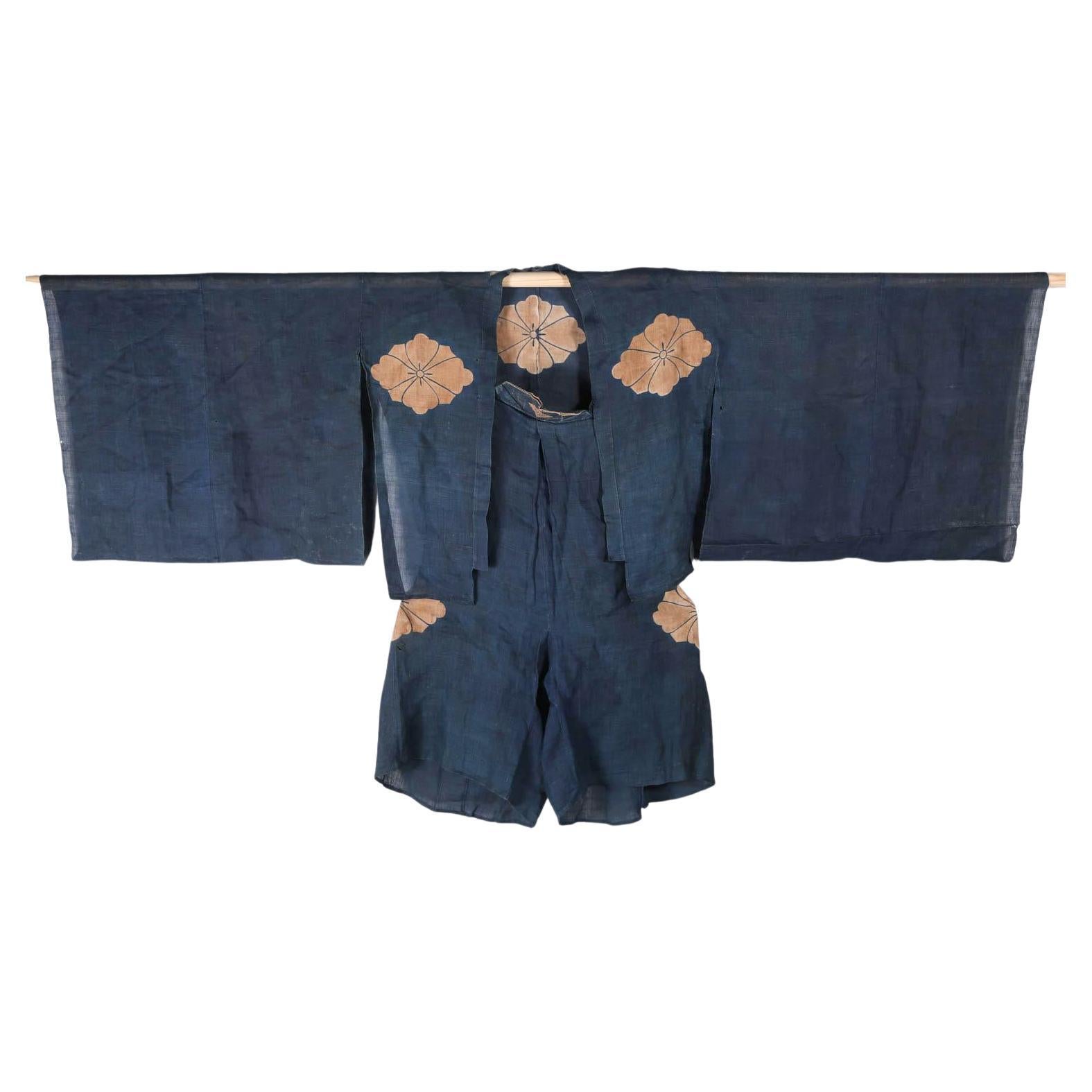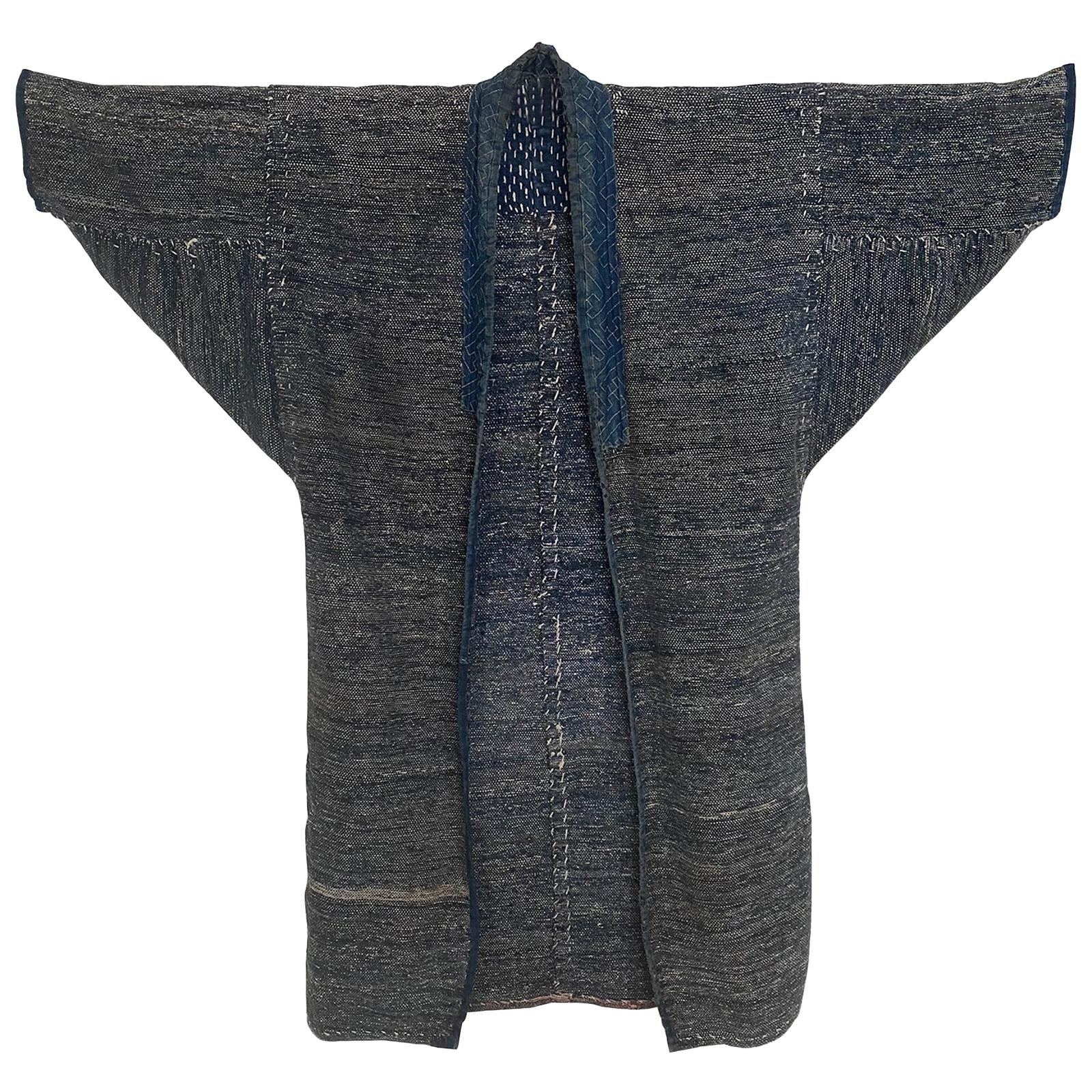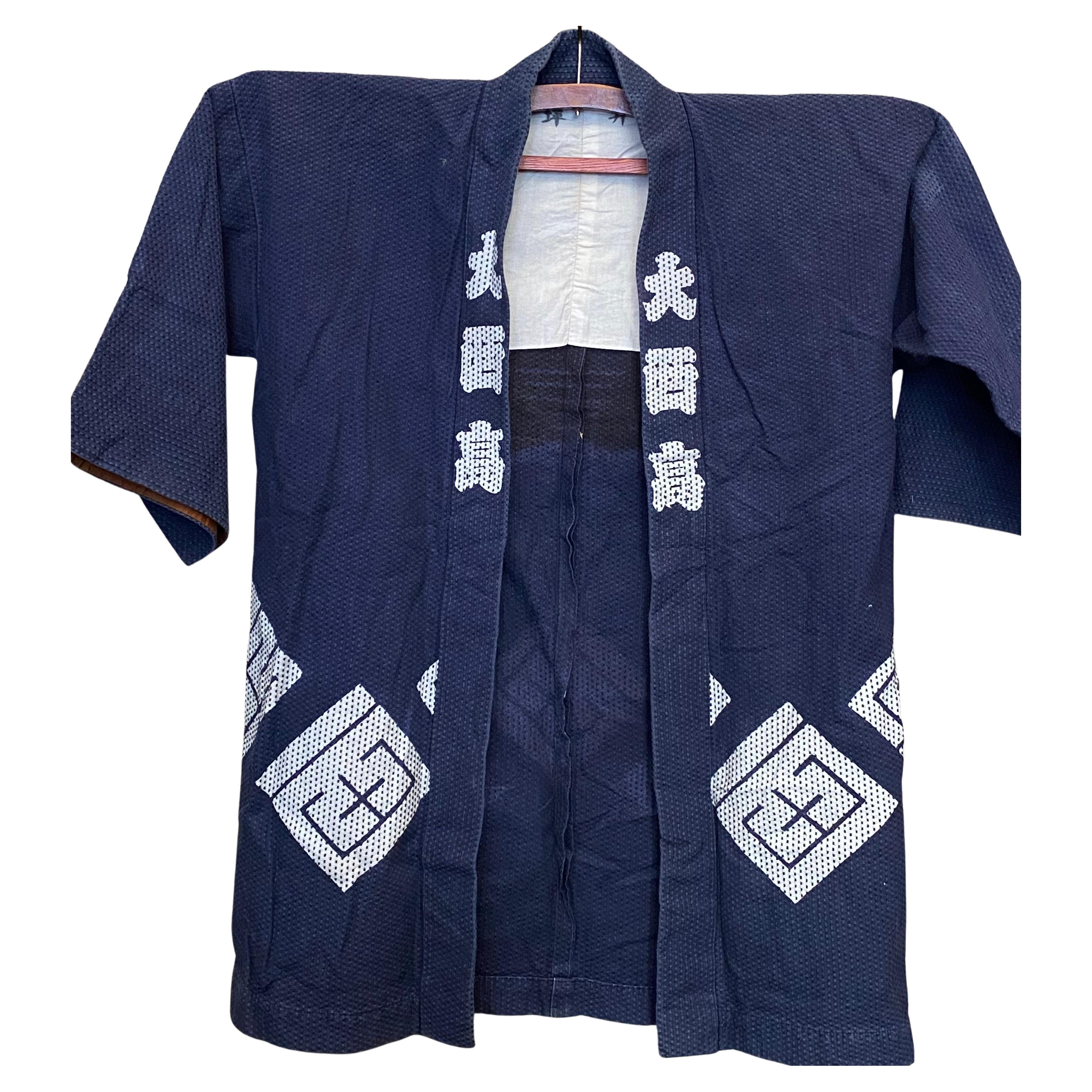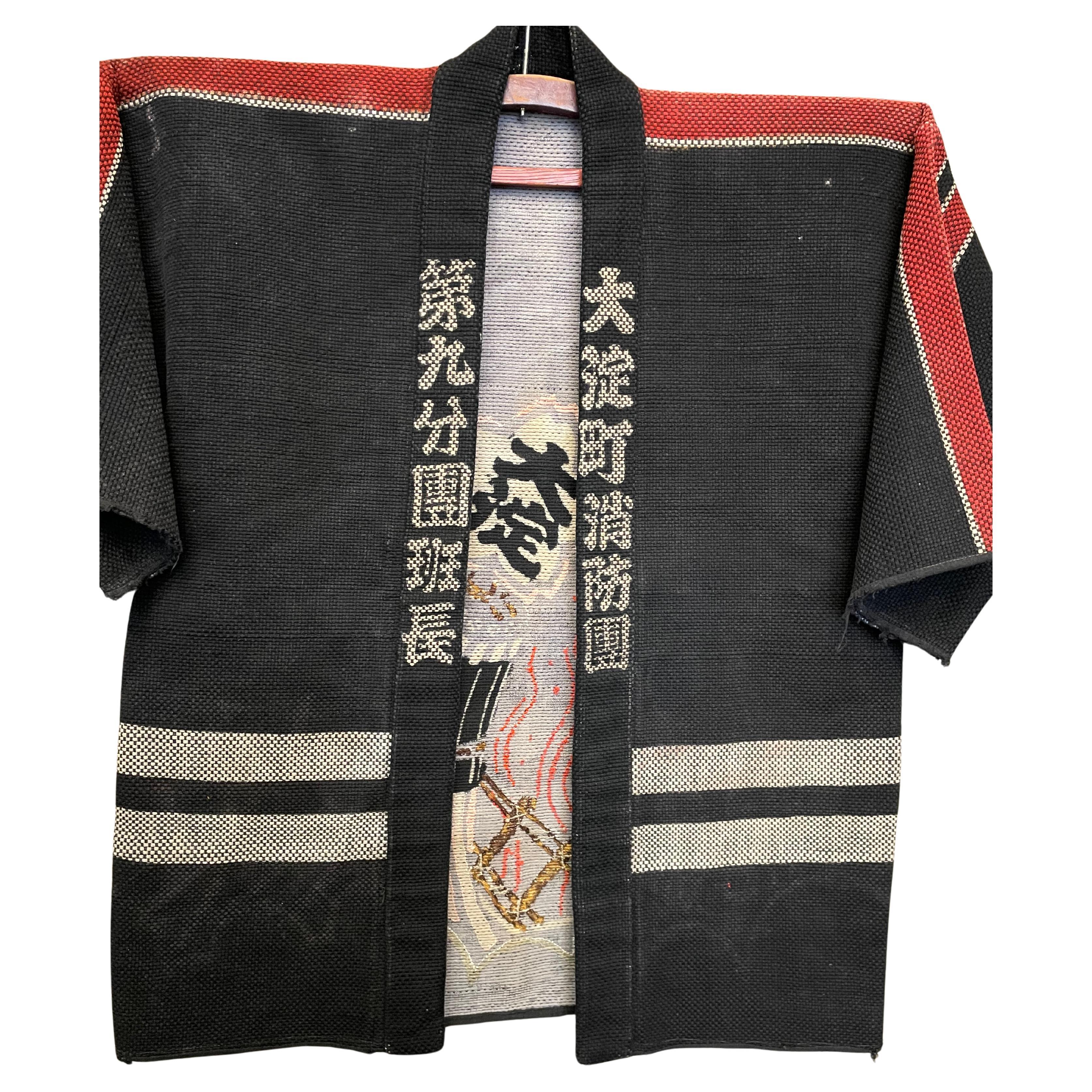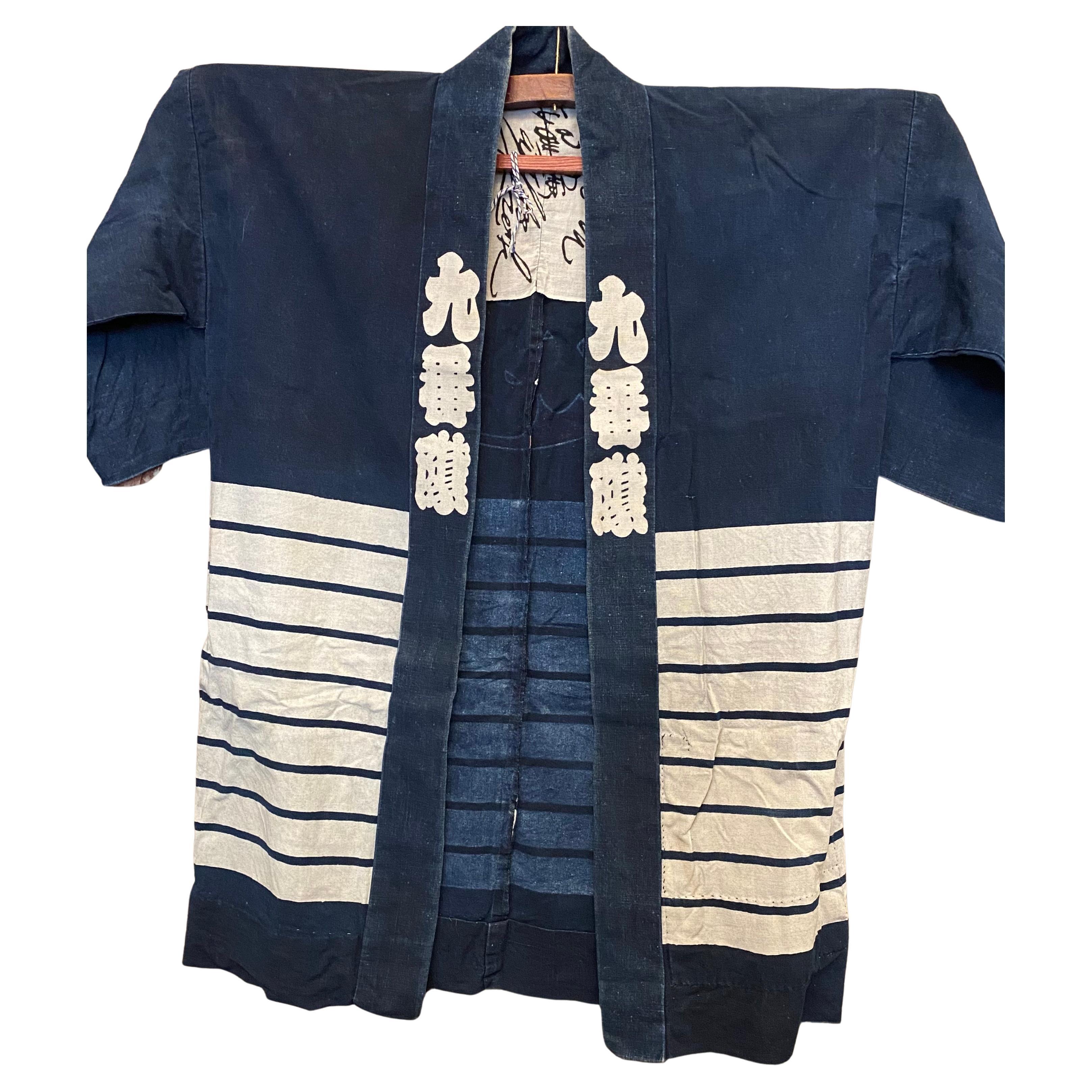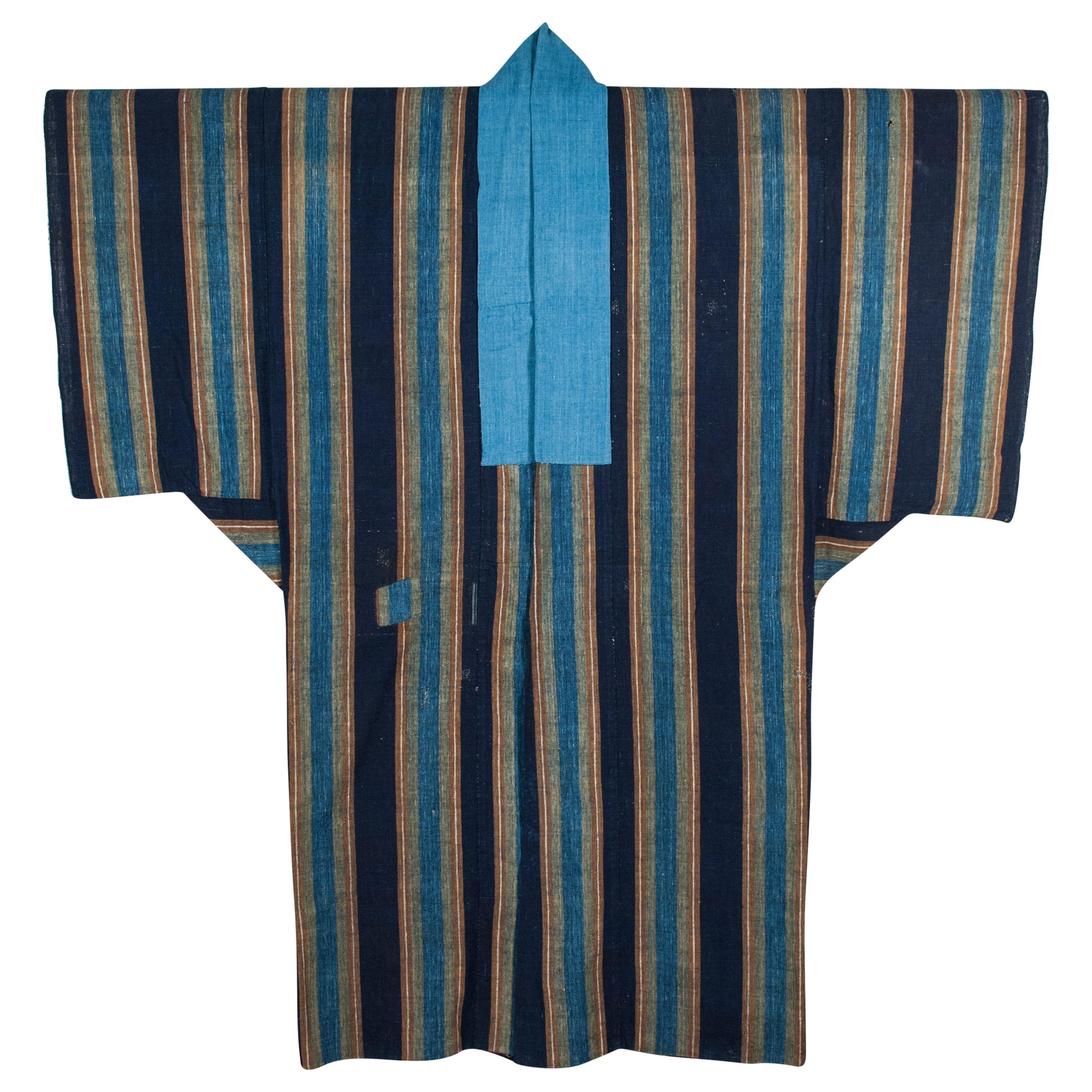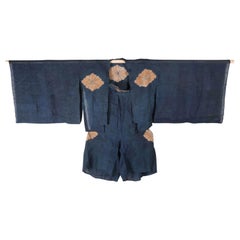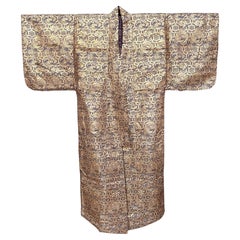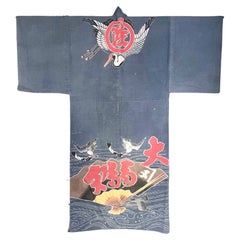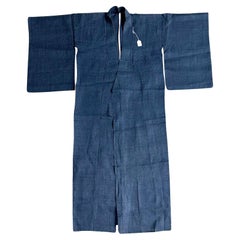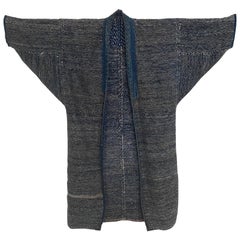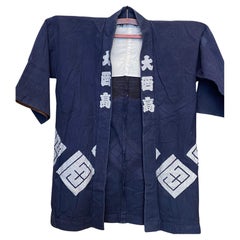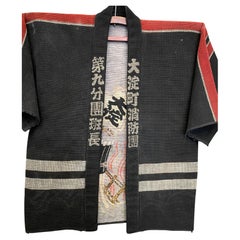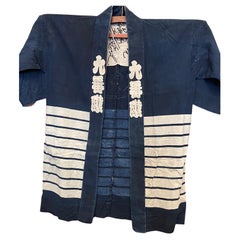Items Similar to Rare Japanese Fireman's Four-Piece Assemble Meiji to Showa Period
Want more images or videos?
Request additional images or videos from the seller
1 of 21
Rare Japanese Fireman's Four-Piece Assemble Meiji to Showa Period
$6,000
£4,587.32
€5,283.67
CA$8,407.84
A$9,386.56
CHF 4,918.42
MX$114,900.74
NOK 62,463.95
SEK 58,895.58
DKK 39,432.54
Shipping
Retrieving quote...The 1stDibs Promise:
Authenticity Guarantee,
Money-Back Guarantee,
24-Hour Cancellation
About the Item
A rare four-piece Japanese Fireman's assemble (Shobosho uniform) woven with heavy cotton and decorated with stencil resist dye circa 1890-20s Late Meiji to Showa Period. The assemble consists of a long jacket (Hikeshi-Haten), a heavy-padded hooded hat (Hikeshi-Zukin) and a pair of long gloves. The pieces appear to be an original set preserved in fine condition, which is rare considering the age and nature of the material. They were uniform traditionally worn by firemen in Japan fighting the fire, a very important profession during Edo and Meiji time when fire could be extremely devastating for the wood buildings.
The jacket features three wide white bands branching in the front, circumvent the sides and converge in the midline of the back. Kanji words Shobosho was stenciled on the either side of the outer lapel. Inside, Kanji characters "Takasago" was stenciled might be the name of the owner. On the center of the back, a large character "Miya" was prominently featured in a red circle. This is likely the name that distinguishes the name and/or the location of the fire department. The hooded hat features a heavily padded crown with flip-down cover and multiple layers of protections. Matching banded design and same Character 'Miya" were used on the front and back side of the hat. The pair of the glove has a matching material and patina as well.
When fully opened as shown in picture 1, the jacket measures: 47"H x 50"W; the hat measures 30"H x 20"W and the gloves measure 21"H x 7"W.
This rare assemble will make a great addition to a Japanese textile collection.
- Dimensions:Height: 80 in (203.2 cm)Width: 50 in (127 cm)Depth: 1 in (2.54 cm)
- Style:Meiji (Of the Period)
- Materials and Techniques:
- Place of Origin:
- Period:
- Date of Manufacture:1890-1930s
- Condition:Wear consistent with age and use. Minor fading. Fine antique textile condition with expected even fading and wear. No noticeable stains or odor.
- Seller Location:Atlanta, GA
- Reference Number:1stDibs: LU945038023672
About the Seller
4.9
Platinum Seller
Premium sellers with a 4.7+ rating and 24-hour response times
Established in 2006
1stDibs seller since 2010
564 sales on 1stDibs
Typical response time: <1 hour
- ShippingRetrieving quote...Shipping from: Atlanta, GA
- Return Policy
Authenticity Guarantee
In the unlikely event there’s an issue with an item’s authenticity, contact us within 1 year for a full refund. DetailsMoney-Back Guarantee
If your item is not as described, is damaged in transit, or does not arrive, contact us within 7 days for a full refund. Details24-Hour Cancellation
You have a 24-hour grace period in which to reconsider your purchase, with no questions asked.Vetted Professional Sellers
Our world-class sellers must adhere to strict standards for service and quality, maintaining the integrity of our listings.Price-Match Guarantee
If you find that a seller listed the same item for a lower price elsewhere, we’ll match it.Trusted Global Delivery
Our best-in-class carrier network provides specialized shipping options worldwide, including custom delivery.More From This Seller
View AllJapanese Two-Piece Indigo Asa Kyogen Festival Costume Meiji Period
Located in Atlanta, GA
A two-piece Japanese festival costume based on Kyogen theater performance circa late 19th century (Meiji Period). The matching assemble consists of an oversize jacket (Suo) and a pai...
Category
Early 20th Century Japanese Meiji Textiles
Materials
Linen
Japanese Brocade Noh Costume Kimono Robe Meiji Period
Located in Atlanta, GA
A Noh costume made from magnificent silk twill brocade woven with metallic gold threads circa 1930s. The robe is identified as "Atsuita", made for male actors in the Noh play. The luxuriant fabric has a deep blue background with golden interlocking hexagon pattern that resembles tortoise shells, the symbol of longevity. The motifs showcase three auspicious symbols in repetitive patterns: roundels of coiled dragon, phoenix and peony. The kimono robe...
Category
20th Century Japanese Meiji Textiles
Materials
Brocade, Silk
Japanese Fisherman Festival Kimono with Tsutsugaki Design
Located in Atlanta, GA
A Japanese festival Kimono robe circa late 19th to early 20th century (end of Meiji Period) for fishing ritual. Made in a cotton fabric, the kimono was elaborately decorated by Tsuts...
Category
Early 20th Century Japanese Meiji Textiles
Materials
Cotton, Linen
Japanese Woven Asa Double Ikat Summer Usumono Kimono Provenance
Located in Atlanta, GA
A “Natsu No Kimono” (summer kimono) also called “Usumono" (thin clothes) dated from early 20th century Taisho Period. This well-preserved garment was tailored from a woven indigo blu...
Category
Early 20th Century Japanese Taisho Textiles
Materials
Hemp
Japanese Woven Asa Double Ikat Summer Usumono Kimono Provenance
Located in Atlanta, GA
A “Natsu No Kimono” (summer kimono) also called “Usumono" (thin clothes) dated from early 20th century Taisho Period. This well-preserved garment was tailored from a woven indigo blu...
Category
Early 20th Century Japanese Taisho Textiles
Materials
Linen
Vintage Japanese Silk Meisen Kimono with Geometrical Design
Located in Atlanta, GA
A vintage Japanese formal silk Kimono in an "ink green" color with striking geometrical design. The garment is hand-stitched Meisen kimono from a crepe l...
Category
Mid-20th Century Japanese Japonisme Textiles
Materials
Silk
You May Also Like
Saki-Ori Farmers Coat, Northern Japan, Meiji Period
Located in Point Richmond, CA
Saki-ori farmers coat, Northern Japan, Meiji period
A very heavy and substantial saki-ori coat, made of cotton with an indigo kasuri lapel. Several patches of hand sewn stitching ...
Category
20th Century Japanese Meiji Textiles
Materials
Cotton
Japanese Antique Hanten "Onishiko" with Cotton showa (around 1960s)
Located in Paris, FR
Hanten is a type of traditional Japanese garment that is often referred to as a "short coat" or "jacket". `it has a loose, kimono-like design with a straight collar and is typically ...
Category
Vintage 1960s Japanese Antiquities
Materials
Cotton
Japanese Antique Fire Fighter Sashiko Banten Oyodocho Reversible 1950s
Located in Paris, FR
This Sashiko b(h)anten was made around 1950 in Showa era in Japan.
On the front, it is written 'Member of fire brigade OYodocho' in Japanese.
Oyodocho is the town where is in Nara p...
Category
Vintage 1950s Japanese Showa Antiquities
Materials
Cotton
Japanese Cotton Hanten, 1930s
Located in Paris, FR
This is a jacket with cotton which was made in Japan.
These kind of jackets are called Hanten in Japanese.
Hanten is a short jacket similar to a haori, but without a gusset. It is...
Category
Vintage 1930s Japanese Showa Antiquities
Materials
Cotton
Late Meiji Period Sleeping Kimono / Yogi, Japan
Located in Point Richmond, CA
Late Meiji Period sleeping Kimono / Yogi, Japan
Yogi are a type of oversized sleeping kimono traditionally used in Japan. This kimono would have b...
Category
Early 20th Century Japanese Tribal Textiles
Materials
Cotton
Japanese Sashiko Banten Member of Vigilance Committee 'Umezonocho', 1920s
Located in Paris, FR
This Sashiko b(h)anten was made around 1920-1926 in Taisho era in Japan.
On the front, it is written 'Member of Vigilance Committee Umezonocho ' ...
Category
Vintage 1920s Japanese Taisho Antiquities
Materials
Cotton
More Ways To Browse
Textile Front
1930s Japan
1930s Japanese
Antique Fire Hat
Antique Firemans
Japanese Fireman
Japanese Fireman Jacket
Used Fireman Jacket
Japanese Silk Embroidered
Framed Chinese Embroidery
Busts Of Moors
Japanese Kimono Antiques
Middle Eastern Kaftan
Qing Dynasty Robe
19th Century Chinese Silk Embroidery
Thai Silk
Framed Chinese Robe
Silk Obi
